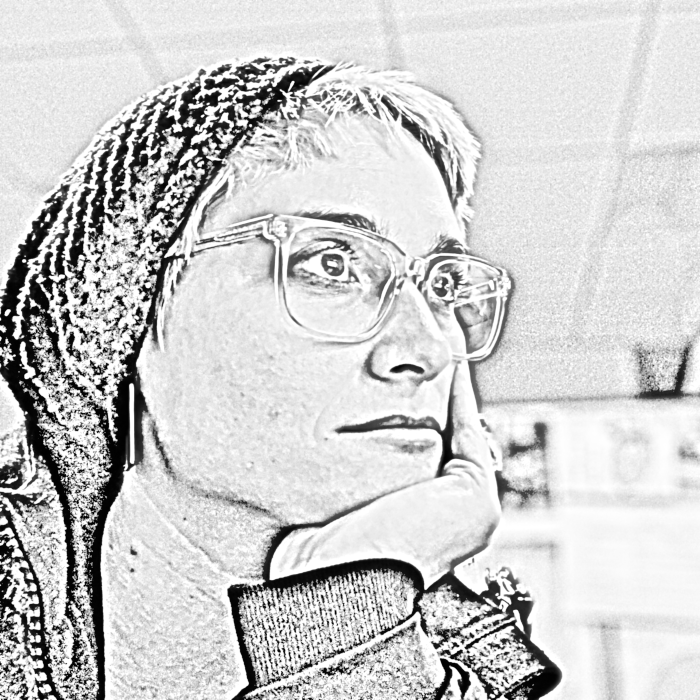State of Surveillance (Xiqiao Township’s Hierarchy of Human Needs)
By Mareike Ohlberg and Jessica Batke
This article is part of a larger investigation of the PRC’s surveillance apparatus, including a feature article, a number of sidebar articles, and supplemental materials, all originally appearing on ChinaFile. The text below does not include illustrations and charts that are part of the full article.
—
Below is ChinaFile’s translation of an excerpt from a July 2019 procurement notice, issued by the Comprehensive Management, Petitioning, and Stability Maintenance Office in Xiqiao township, Guangdong province. The excerpt describes local officials’ plans for positioning new facial recognition cameras, based on their assessment of residents’ likely movements and daily needs. The original Chinese text follows.
* * *
Deployment Strategy
Society is the environment in which individual people live, and it significantly influences their lives and development. Society is also a collection of individuals, and of the interactions among individuals. All kinds of phenomena that emerge within societies result from human interaction: violence, robbery, arson, etc. Therefore, when deploying the nodes of the facial recognition network, the deployment design should take into account people’s four basic needs (clothing, food, housing, and transportation) as well as five major additional quality-of-life needs (arts, education, and culture; entertainment; healthcare; finance; and travel).
Clothing: In their daily lives, people need to dress themselves. This is inseparable from the need to purchase clothing from large shopping malls, shops, pedestrian streets, supermarkets, and other such places.
Food: In their daily lives, people need to eat. This is inseparable from the need to purchase food in hotels, restaurants, farmers’ markets, and other such places.
Housing: In their daily lives, people need to rest. This is inseparable from the need to stay in hotels, guesthouses, residential neighborhoods, and other such places.
Transportation: In their daily lives, people need to go out. This is inseparable from the need to visit airports, train stations, bus stations, subway stations, piers, pedestrian underpasses, and other such places.
Arts, Education, and Culture: In their daily lives, people will pursue mental nourishment. This is inseparable from the need to learn from museums, libraries, schools, and other such places.
Entertainment: In their daily lives, people will seek appropriate stress-relieving and recreational activities. This is inseparable from the need to find entertainment at Internet cafes, KTVs, spa service/footcare/massage and leisure centers, fitness centers, cinemas, concert halls, and other such places.
Healthcare: In their daily lives, people encounter various forms of illness. This is inseparable from the need to seek medical treatment at hospitals, clinics, and other such places.
Finance: In their daily lives, people will circulate money and property. This is inseparable from the need to conduct transactions with banks, pawn shops, securities companies, and other such places.
Travel: In their daily lives, people will engage in recreational travel. This is inseparable from the need to amuse oneself at scenic spots, amusement parks, and other such places.
According to the types of entry and exit points for the kinds of venues mentioned above, and in combination with the principle of differentiating between three types (A, B, and C) of points to monitor people, the layout model for urban facial recognition networks is as follows: set a core, mark key points, and append auxiliary areas.
- Set a core. In line with current urban planning public transportation controls, use the security checkpoints established by traffic and transport units to install monitoring points; implement comprehensive blocks and controls for people entering and exiting a city; and use real-time information to clearly grasp whether or not those people are still in the city. Settings: security checks at airports, train stations, bus stations, ports, subway stations, and other such locations.
- Mark key points. At the entry and exit points of places necessary for daily life and social interaction, set key areas to control people’s movements and establish monitoring points; conduct real-time management and control of people’s movements within the city; and grasp the orbit of people’s activities. Settings: pedestrian thoroughfares in locations such as shopping malls, supermarkets, hotels, guesthouses, hospitals, schools, and Internet cafes.
- Append auxiliary areas. Depending on the current status of the urban road network, set auxiliary areas for management and control as needed at outdoor traffic intersections; establish monitoring points; and expand the coverage of such points. Settings: outdoor pedestrian thoroughfares such as crosswalks, sidewalks, and entrances and exits to scenic spots.
* * *
建设规划
对于一个人来说,社会是他生存的环境,对他的生活与发展都有着很大的影响,反之社会也是人 的集合,是人们相互关系的集合,社会中出现的各种现象也都是人活动后形成的产物,例如打架、抢 劫、纵火等行为。因此人像感知网的点位布建,考虑围绕“人员在社会中生存所必须的‘衣、食、住、 行’四大生活基本需求,以及‘文、娱、医、财、游’五大品质生活附加需求”进行设计。
“衣”是指人们日常生活必须要进行着装,这就离不开大型商场、商铺、步行街、超市等场所的 衣物购置需求。
“食”是指人们日常生活必须要摄入食物,这就离不开酒店、餐馆、农贸市场等场所的食物购置 需求。
“住”是指人们在日常生活中必须要进行休息,这就离不开酒店、宾馆、住宅小区等场所的落脚 需求。
“行”是指人们在日常生活中必须要外出,这就离不开机场、火车站、汽车站、地铁站、码头、 地下通道等场所的出行需求。
“文”是指人们在日常生活中会追求精神食粮,这就离不开博物馆、图书馆、学校等场所的学习 需求。
“娱”是指人们在日常生活中会寻求适当的舒压、放松活动,这就离不开网吧、KTV、洗浴/足疗 /按摩休闲中心、健身中心、电影院、音乐厅等场所的娱乐需求。
“医”是指人们在日常生活中会遇到各类疾病,这就离不开医院、诊所等场所的寻医需求。
“财”是指人们在日常生活中会进行财物流通,这就离不开银行、典当行、证券公司等场所的交 易需求。
“游”是指人们在日常生活中会外出旅游,这就离不开景区、游乐园等场所的游玩需求。
按照上述各类场所人员出入通道形态,结合 A、B、C 三类人员监控点划分原则,设计城市人像感知网的布点布局模型为:定核心、标重点、辅外围。
- 定核心 基于城市规划的公共出行交通现状,将交通运输单位的安检通道设定为人员管控核心区域,设立 人员监控点位,对出入城市的人员实行全面封控,清晰掌握人员是否还在城市内的实时信息。 场景:机场、火车站、汽车站、港口、地铁站等场所的安检通道。
- 标重点 将人员日常生活、社交场所的出入通道设定为人员管控重点区域,设立人员监控点位,对城市内人员流动进行实时管控,掌握人员活动轨迹。 场景:商场、超市、酒店、宾馆、医院、学校、网吧等场所的人员通道。
- 辅外围 依托城市路网现状,在室外人员通行路口按需设定为人员管控辅助区域,设立人员监控点,拓展 点位覆盖度。 场景:人行横道、人行道、景区出入口等室外人员通道。
